
Taiga Boreal Coniferous Forests

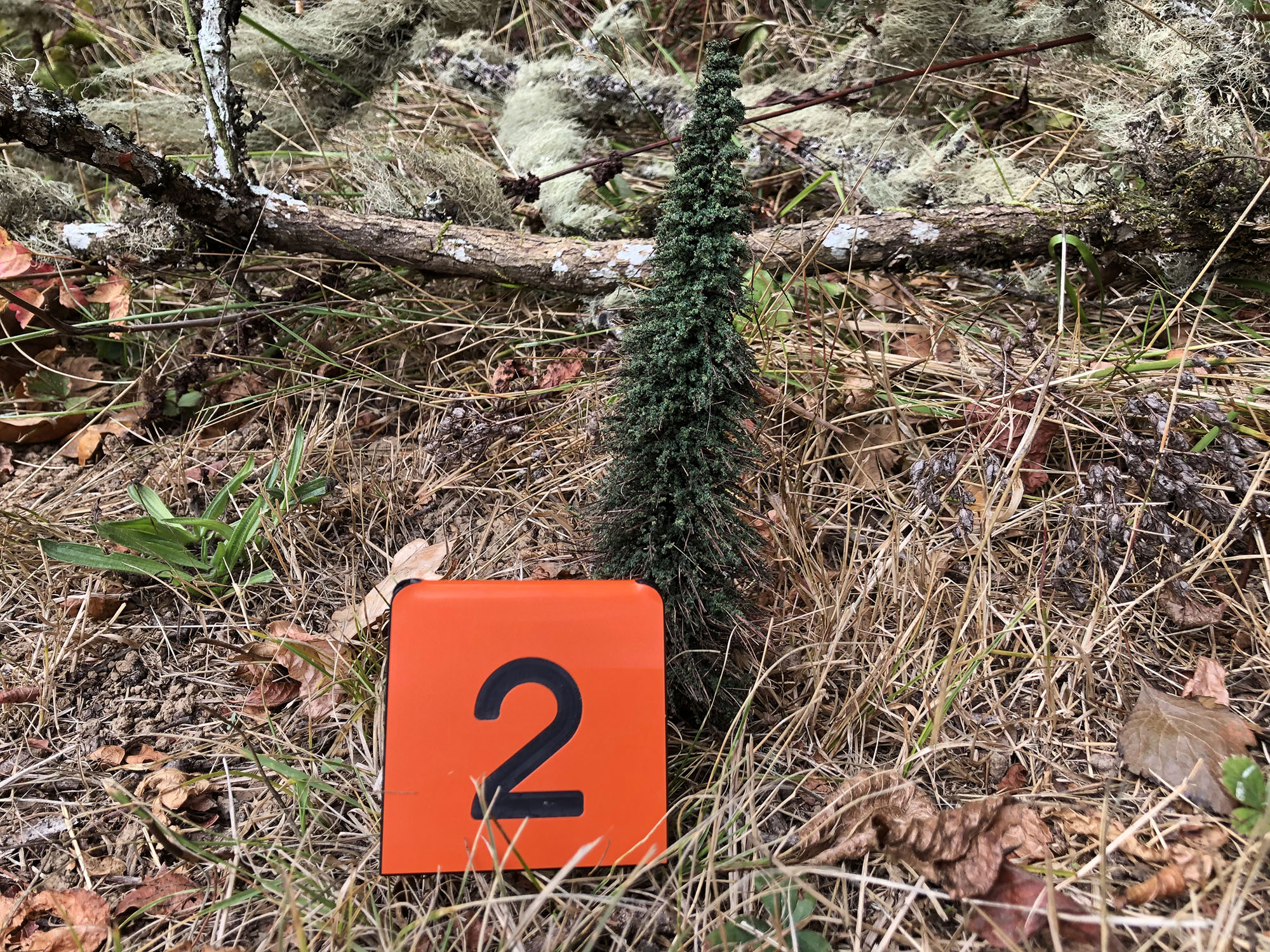
Taiga Objectives
- Provide the climate characteristics of taiga boreal coniferous forests.
- Distinguish between angiosperm and gymnosperm trees, providing characteristics and examples of each.
- Identify different types of conifers, including pine, fir, spruce, cedar, and sequoia.

The Taiga biome covers a huge swath of land in the northern hemisphere, and people have inhabited areas of the Taiga in low numbers for thousands of years. Despite this, many people are unaware of this incredible biome.
This video introduces the taiga including a few aspects you may already be familiar with.

Taiga are cold with moderate precipitation. However they are warm enough to not have ____ in the soil like the tundra.

The taiga is warm and wet enough for the coniferous trees that photosynthesize year-round.
Countries with taiga typically have well-developed forestry industries, it is typically too cold and dry for grain agriculture. Although these forests are the most stable, there have been increased large-scale fires in recent years.

Tree Classification
We will be studying trees repeatedly in this course. This video begins our introduction to how they are classified.
Each ecosystem has its own set of hazards to consider in advance. In all forests, high winds and falling branches are a specific risk.
Conifers
Coniferous trees dominate the taiga and temperate coniferous forests.
This video introduces coniferous trees.
Are coniferous trees (conifers) taxonomically classified as gymnosperms or angiosperms?
Conifers trees bear their seeds in cones instead of fruits. List two different examples of coniferous trees.
When do conifers lose their leaves if not all at once like deciduous trees?
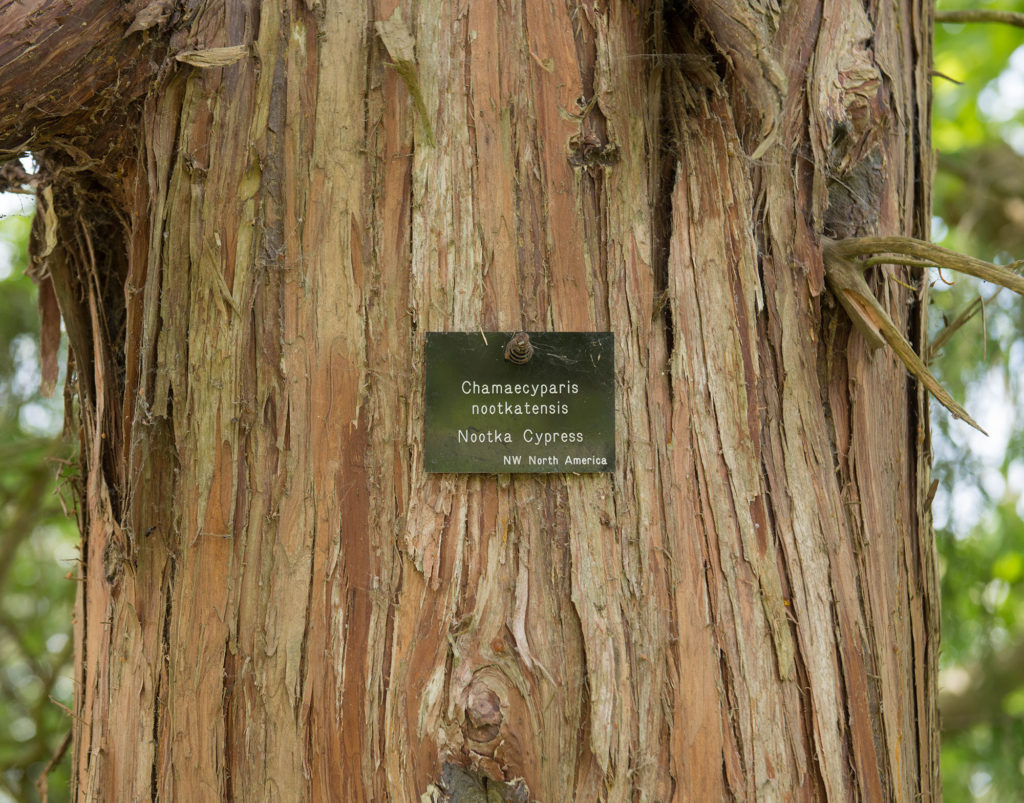
Conifers can be identified by bark, cone, leaves, and even overall shape.
We are using leaves as the method of classification as this works on even the youngest trees. You can often find dead leaves under a tree if the branches are out of reach.
Often plants are identified using dichotomous “two-choice” keys, like this one.
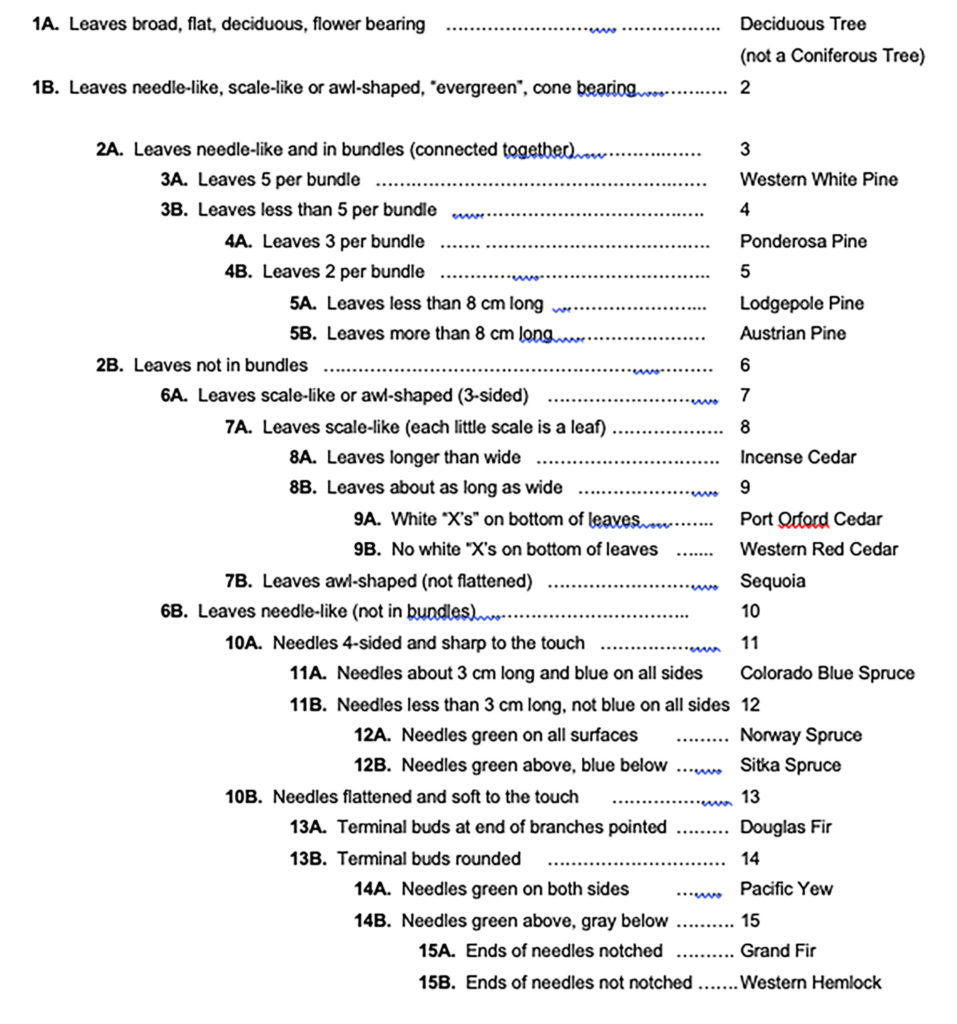
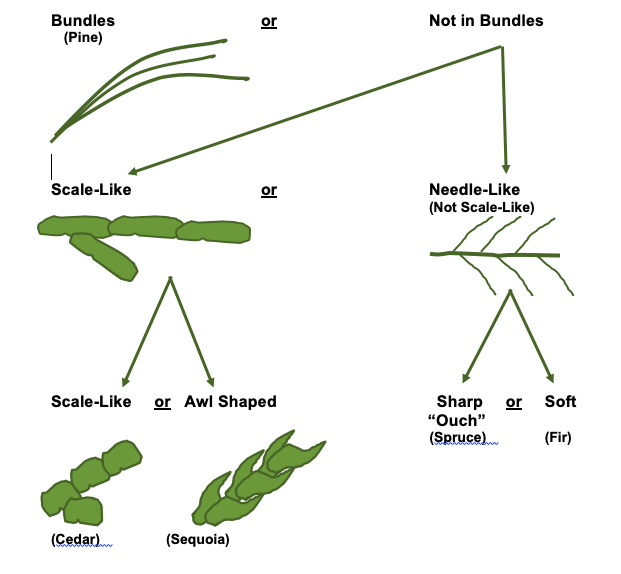
The other option is a visual key that uses two choices with picture cues.
To start using either of these keys to identify a conifer by its leaves, pick a leaf up from the ground under the tree.
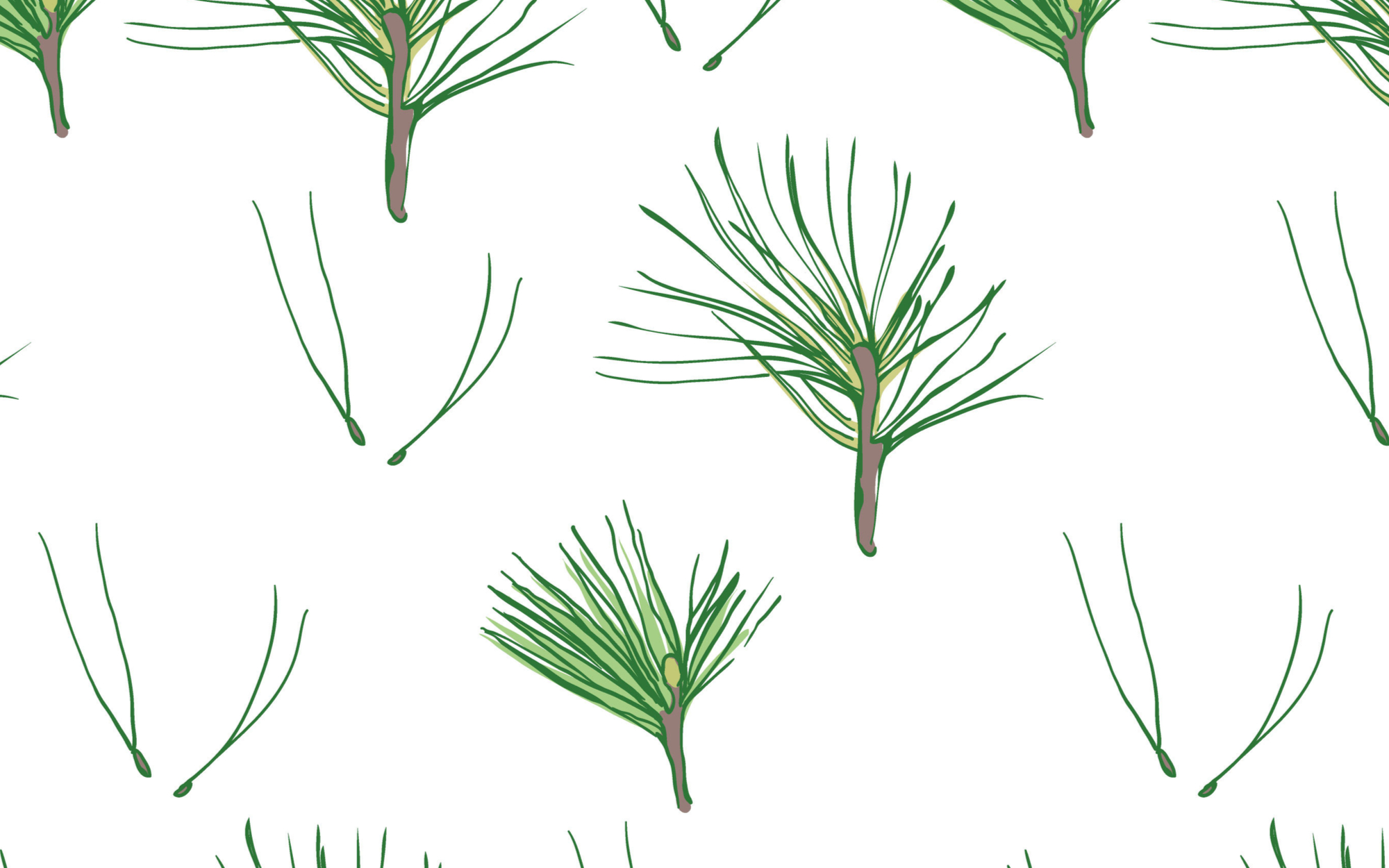
Determine whether the leaves are in bundles or not in bundles. These needle-shaped pine leaves are attached together at the base and are an example of a leaf bundle. When you pick them up off the ground, there are two, three or even five needles attached together in a bundle, depending on the species.
Pine trees are an example of needle-like leaves in a bundle.
These fir leaves are also needle-shaped but are not in bundles; each leaf falls off individually.
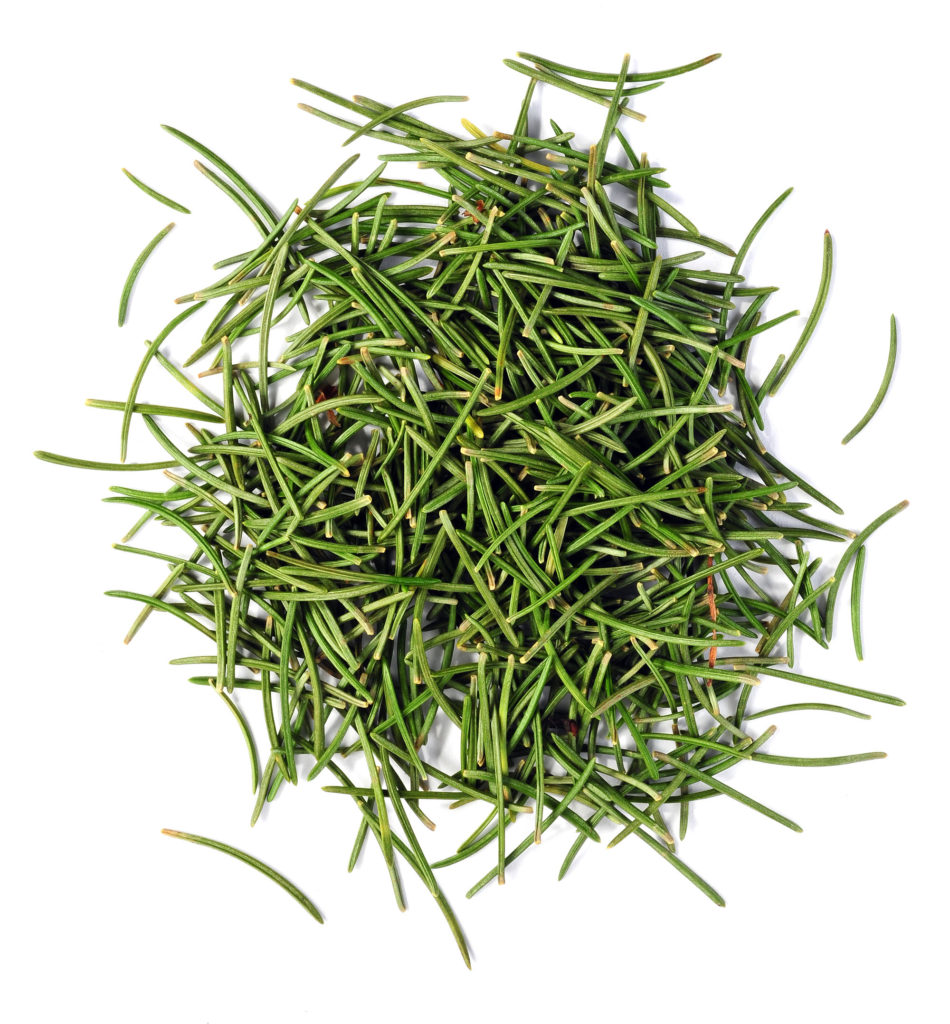
Both fir species and spruce species have needle-shaped leaves that are not in bundles. Typically the fir needles are softer, you can run a stem through your fingers easily. Generally the spruce leaves are sharp to the touch.
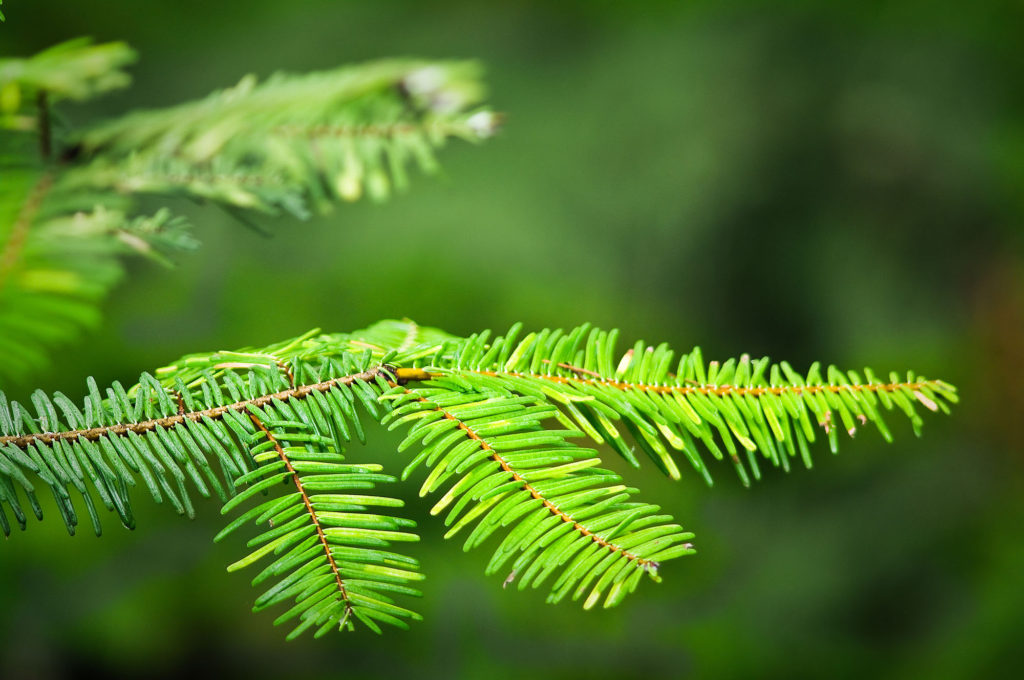
Fir
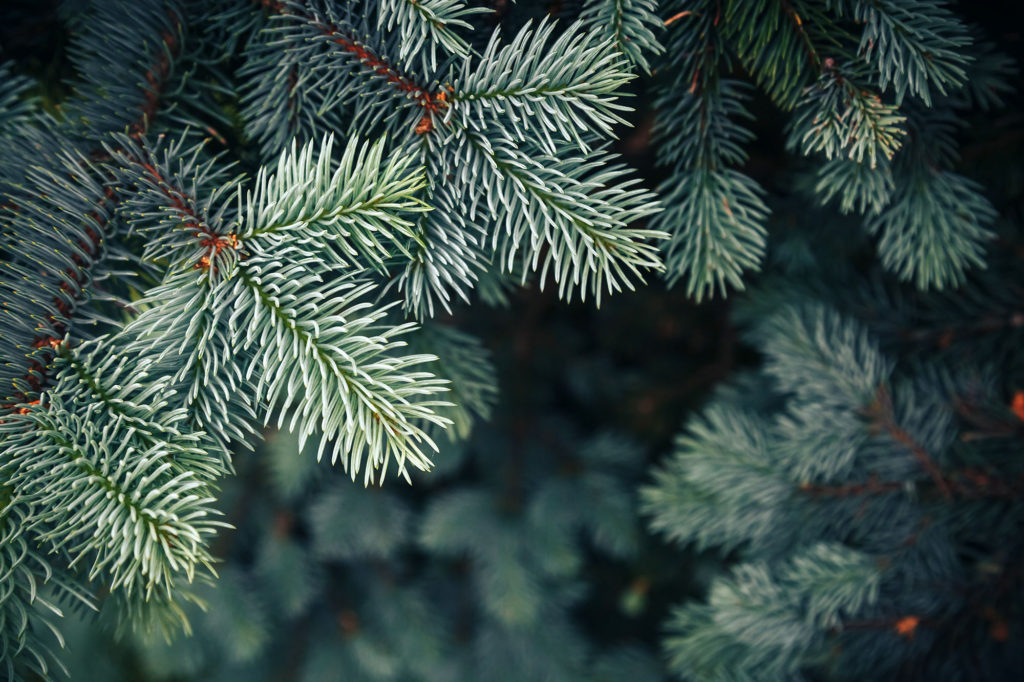
Spruce
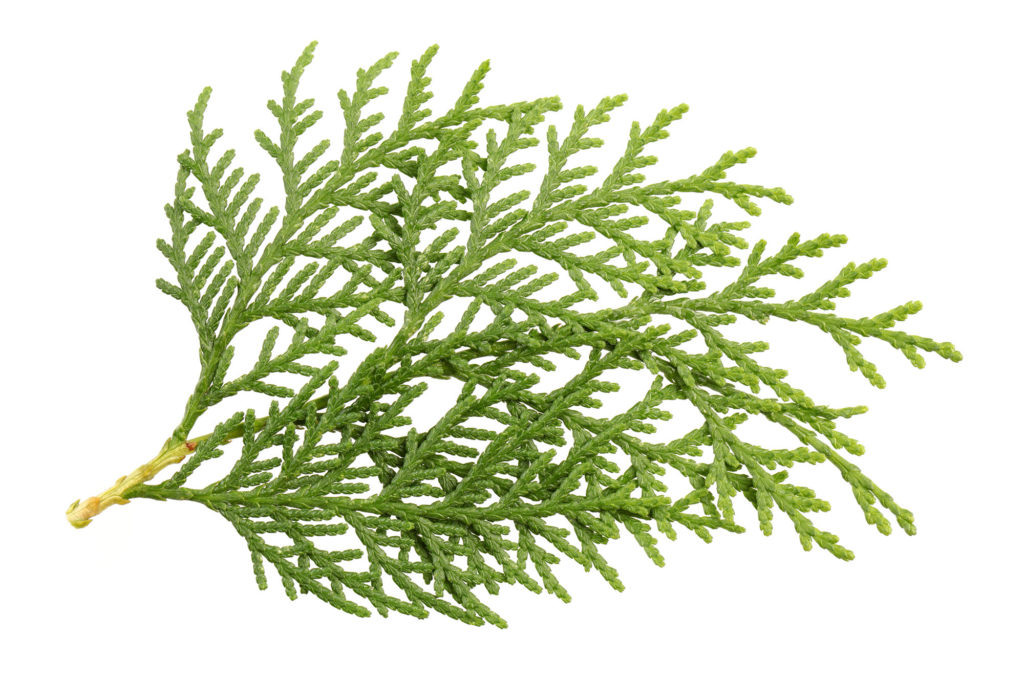
Not all conifers have needle-like leaves. The cedar pictured here has scale-like leaves that overlap.
Cedar leaves are scale-like and flattened. Sequoia also have scale-like leaves, but they are more three-dimensional and sharper to the touch.
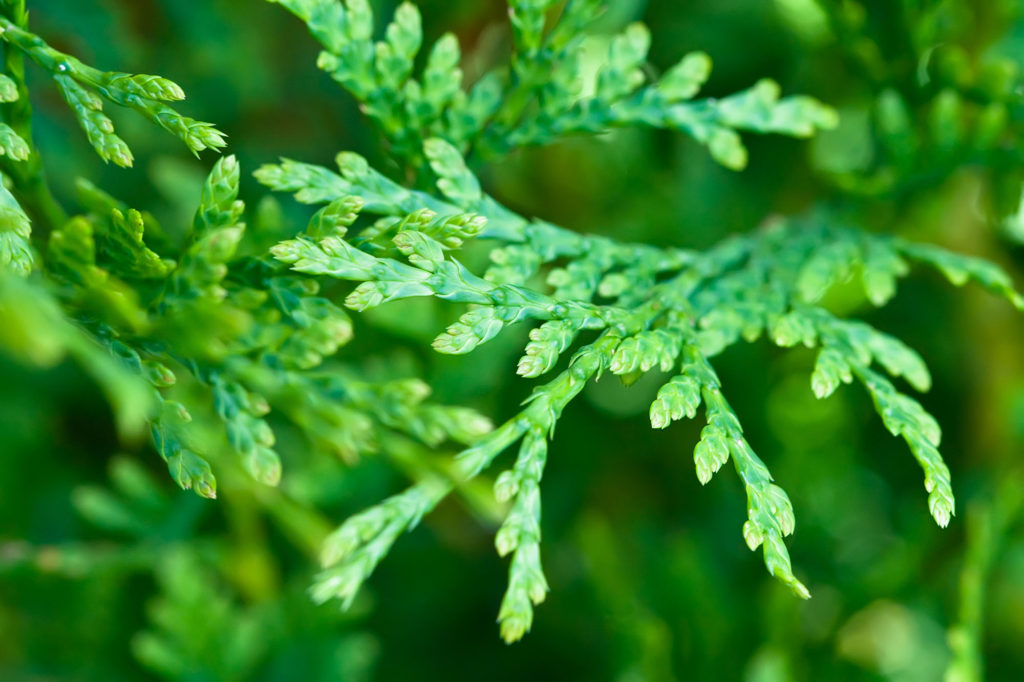
Cedar
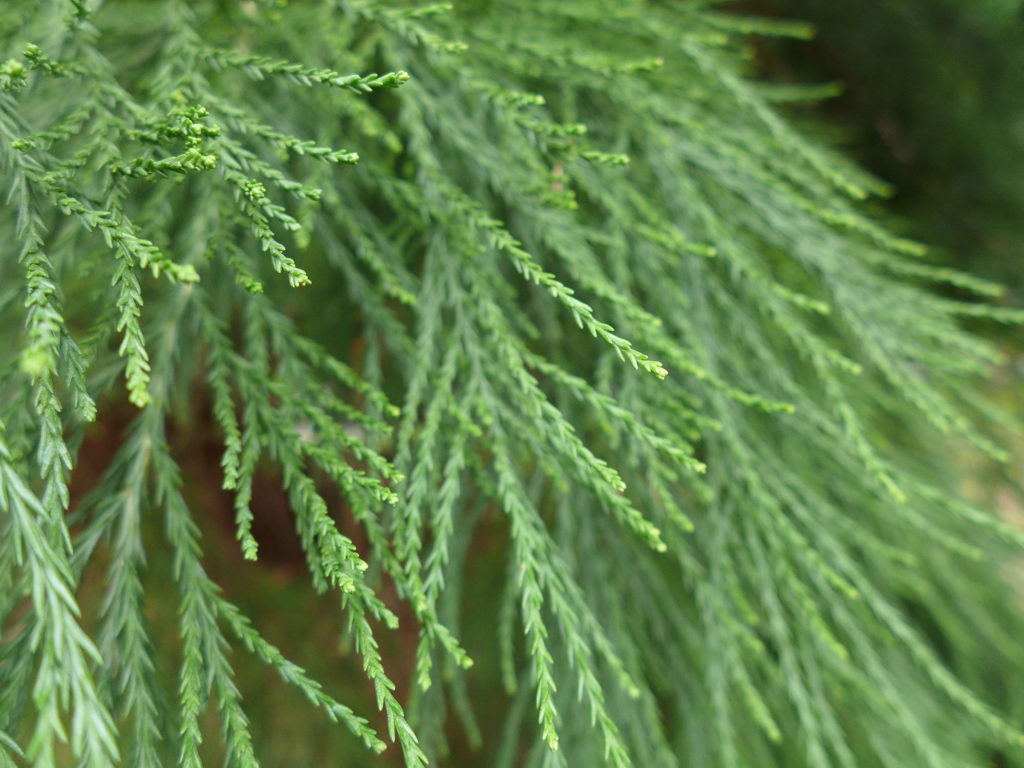
Sequoia
Is this a pine, fir, spruce, cedar, or sequoia?
Identify these two trees, choosing from pine, fir, spruce, cedar, or sequoia.
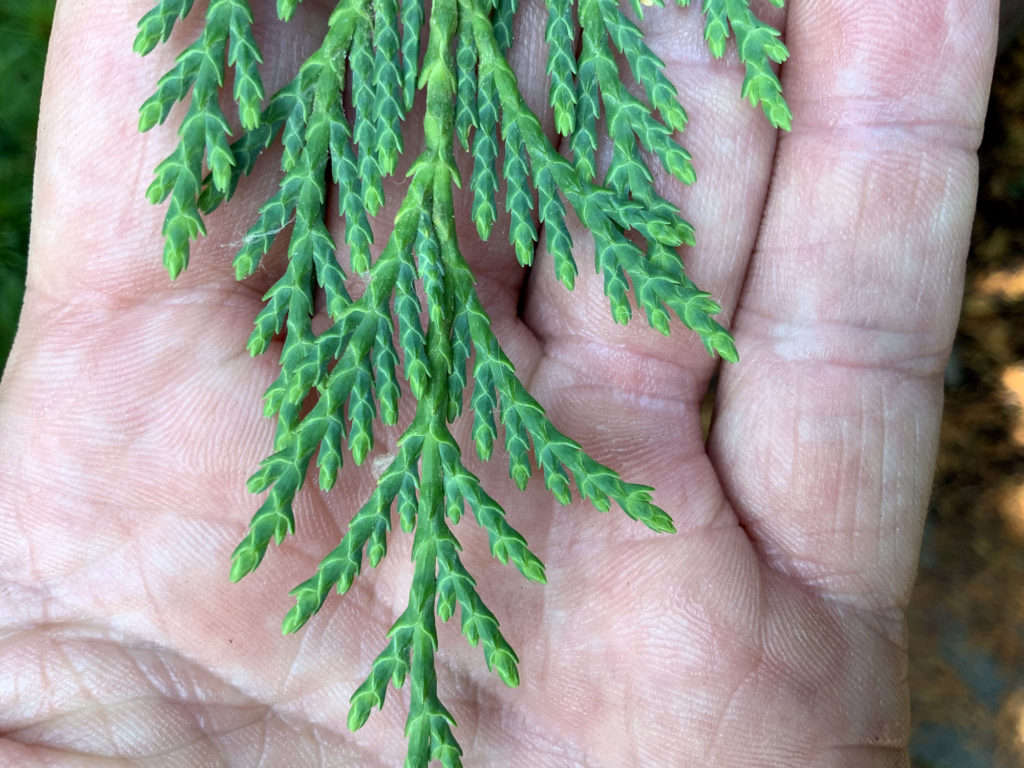
Flattened scale-like leaves
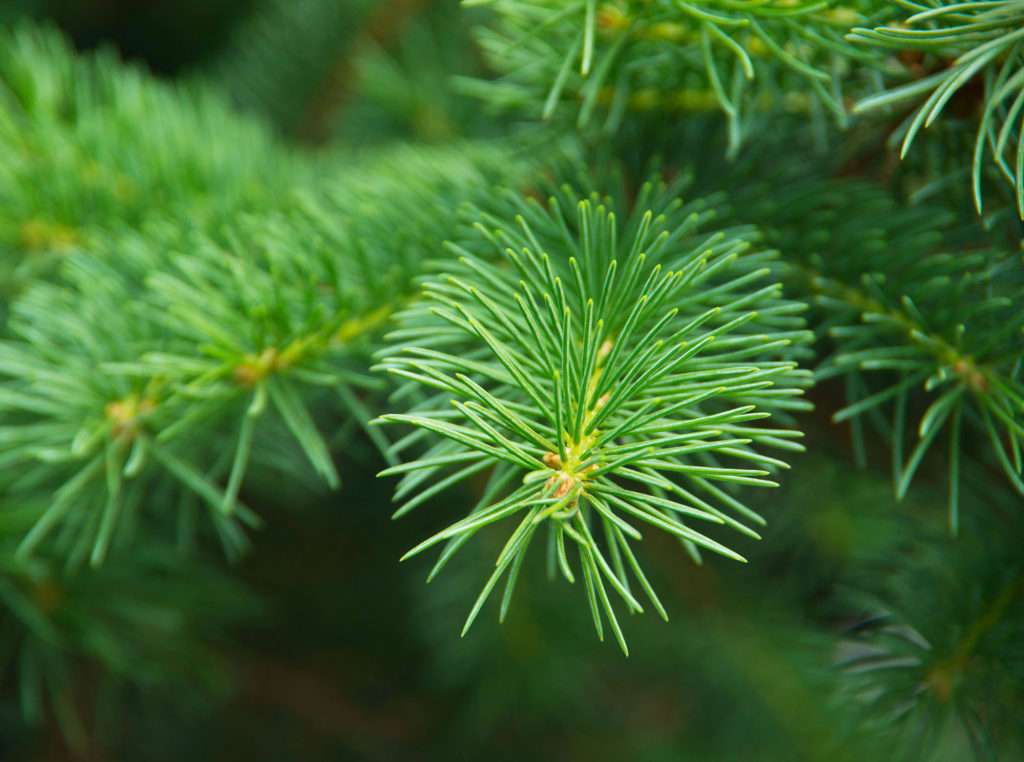
Leaves not in bundles & sharp to the touch
The next section heads to the temperate forests with a more moderate climate than the taiga.

Check your knowledge. Can you:
- provide the climate characteristics of taiga boreal coniferous forests?
- distinguish between angiosperm and gymnosperm trees, providing characteristics and examples of each?
- identify different types of conifers, including pine, fir, spruce, cedar, and sequoia?



